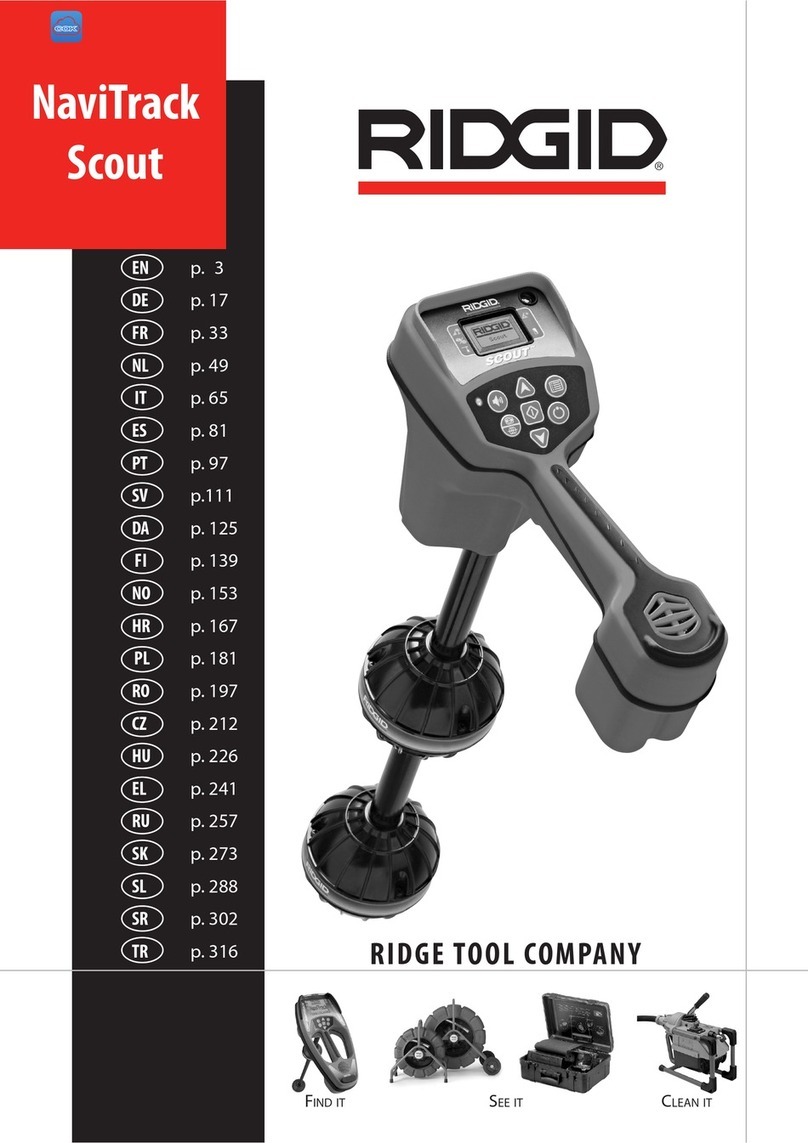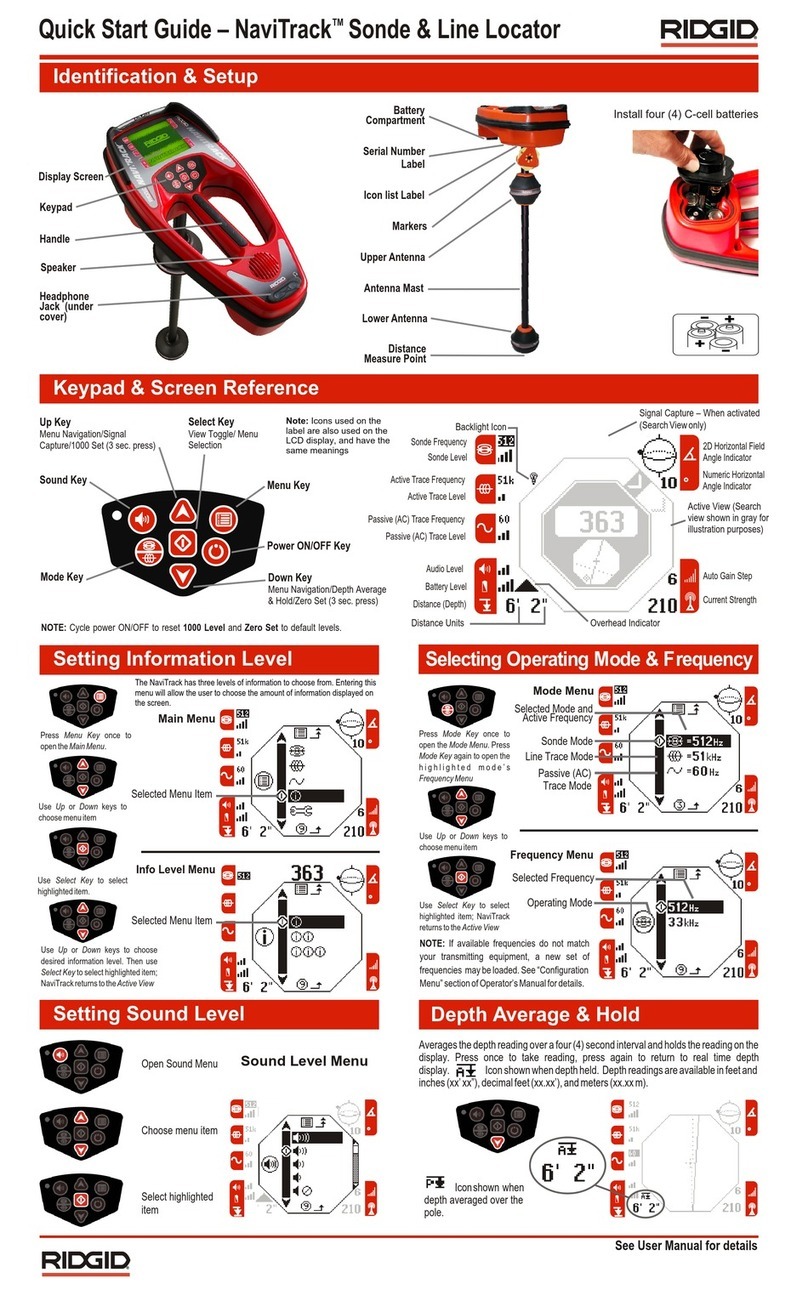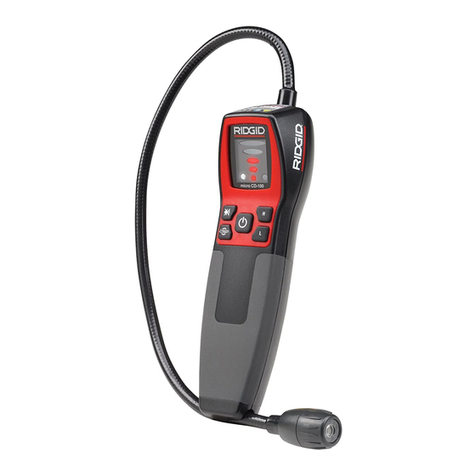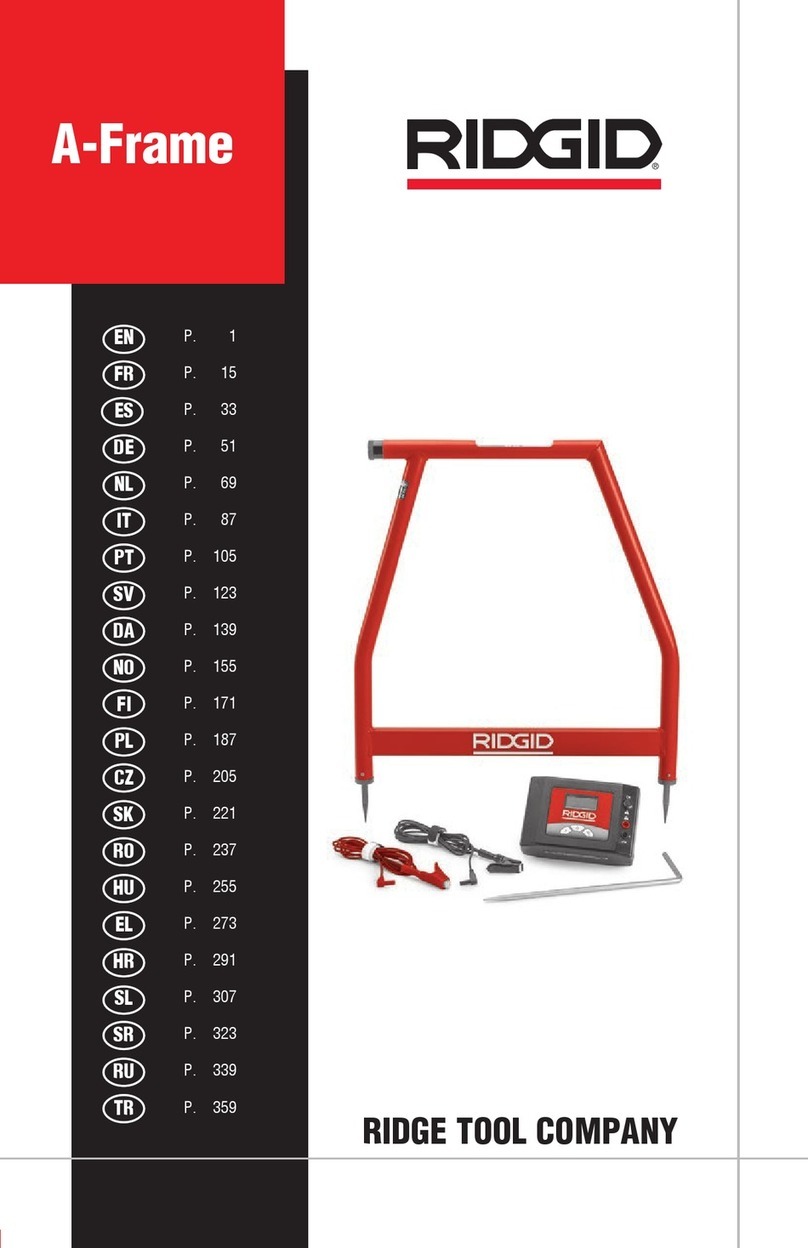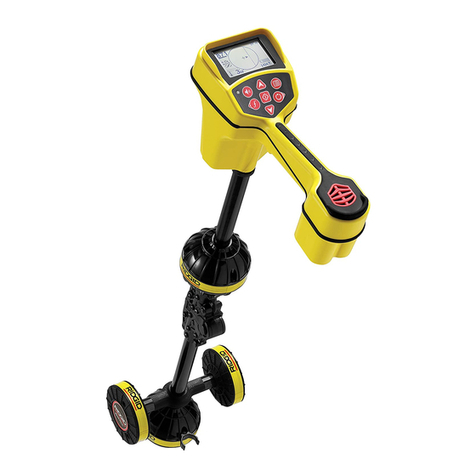micro CD-100 Combustible Gas Detector
Ridge Tool Company 5
of measurement within two (Low and High) settings of sensitivity.
When the tool senses the presence of a combustible gas, it will tell
the operator by blinking the appropriate light(s), triggering the ap-
propriate audible alert or providing the appropriate vibration alert.
The micro CD-100 comes equipped with an attached flexible 40 cm
probe hose.
Specifications
Visual Alert....................................5 Red LEDs: as Measuring
Levels; Sensitivity Visual Alert
Audible Alert(85 db) ......................Loud Audible Ticking Rate
(w/Continuous Modulation
Proportional to as Level)
Vibration Alert ...............................Standard
Sensitivity .......................................40 ppm (methane)
Response Time ..............................< 2 Seconds
Range.............................................0 – 6400 ppm (methane)
Sensitivity Level
(methane) (HI H).........................5 Levels:
40/80/160/320/640 ppm
Sensitivity Level
(methane) (LOW)..........................5 Levels:
400/800/1600/3200/6400 ppm
Warm Up Calibration ....................Automatic
Warm Up Time..............................50 Seconds Max
Operating Buttons.........................Five: Power ON/OFF, High
Sensitivity, Low Sensitivity,
Audio Alerts, Vibration Alerts
Batteries .......................................4 x “AA”
Low Battery Status .......................Low and High Sensitivity LED
Solid
Sensor Connection .......................Plug-In
cause serious personal injury or death. Know the character-
istics of the gas you are working with and use proper precau-
tions to avoid hazardous conditions.
•Always turn on and calibrate the gas detector in an area
known to be free of combustible gases. Calibration in an
area containing combustible gas will result in incorrect calibra-
tion and lower than actual readings. This could result in com-
bustible gases not being detected.
If you have any question concerning this RID ID product:
• Contact your local RID ID distributor.
• Visit www.RID ID.com or www.RID ID.eu to find your local
RID ID contact point.
• Contact RID ID Technical Services Department at rtctechser-
vices@emerson.com, or in the U.S. and Canada call (800) 519-
3456.
Description, Specifications
And Standard Equipment
Description
The RID ID®micro CD-100 Combustible as Detector is a gas leak
locating tool that is used to identify the presence of and isolate the
source location of combustible gases such as methane, propane,
butane, ammonia, carbon monoxide and many others (please see
back of manual for a more complete list). Even low levels of com-
bustible gas can be detected in seconds.
The micro CD-100 detects gas concentrations through the use of
an internal sensor. This sensor is heated during operation. As the
heated sensor interacts with gases, the unit immediately indicates
to the user that combustible gases are present. The micro CD-100
indicates the presence of combustible gases with visual, audio and
vibration feedback mechanisms. There are five (5) threshold levels


